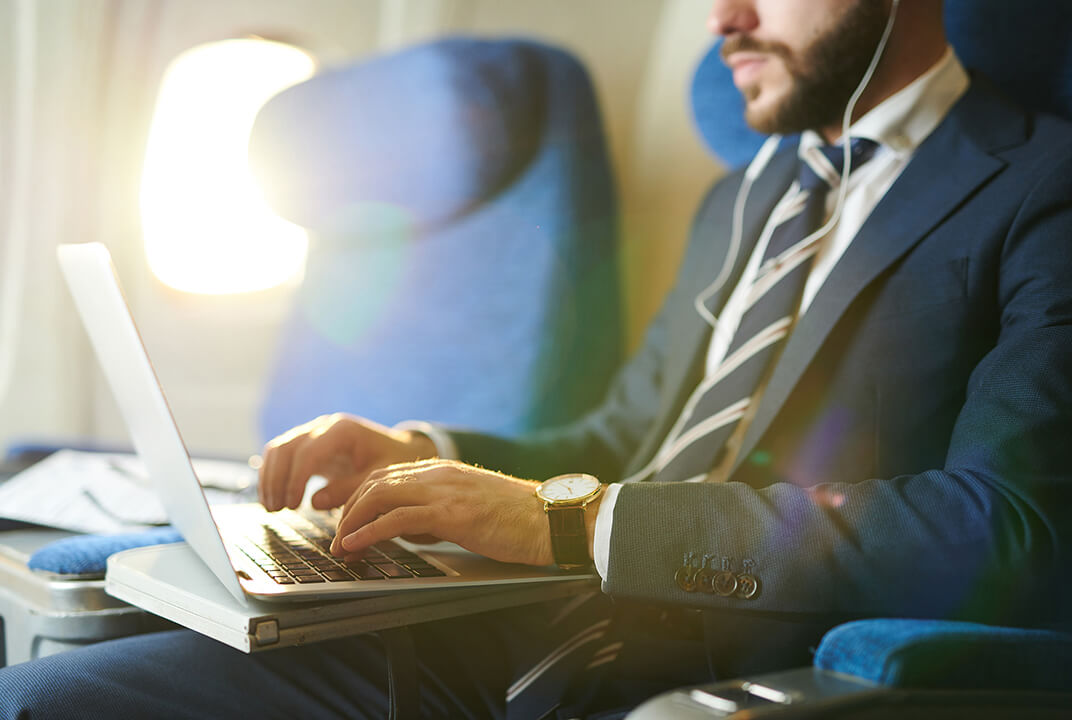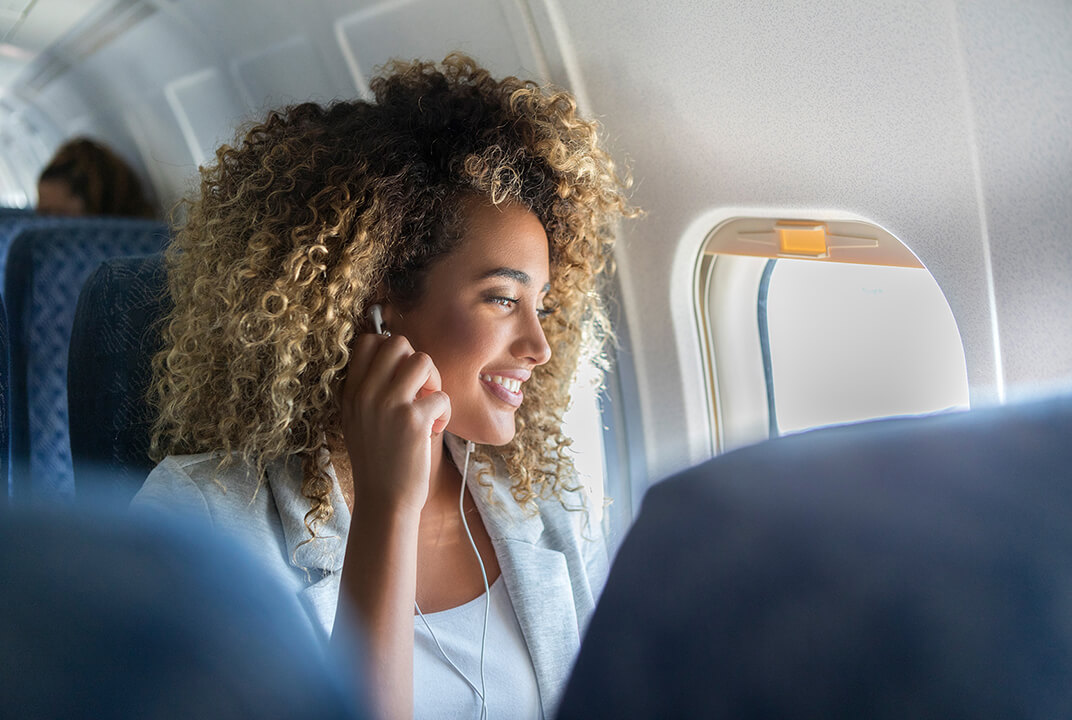New report highlights opportunity for Australian airlines to adapt and grow market share as demand for air travel recovers
Aviation
Independent white paper finds the airline market is unlikely to recover fully until at least April 2022, but Australian airlines can take advantage of significant opportunities ahead
Australian airlines can win international market share if they adjust to evolving competitive dynamics and potential shifts in travel patterns as Covid-19 travel restrictions lift, according to an independent white paper commissioned by Inmarsat, the world leader in global, mobile satellite communications.
‘Australia’s Aviation Market: The Impact of Covid-19 and a Slow Recovery’, written by aviation analyst Brendan Sobie, found that the domestic market will recover more quickly than international air travel, with the re-opening of borders and the ending of quarantine requirements crucial to the sector’s rebound. In addition, international leisure traffic is likely to recover faster than business traffic, with airlines adding capacity to destinations that are popular with leisure travellers in the post-pandemic environment – and not necessarily the same destinations that were popular prior to Covid-19.
Australian carriers will benefit from a stronger passenger preference for non-stop services. Prior to the pandemic, foreign carriers flew approximately two-thirds of international passengers to and from Australia, creating a significant opportunity for local carriers to now increase market share by recovering international traffic faster than competitors from other parts of the world. While some international services will become harder to sustain due to a decline in the highly profitable premium business traffic, Australian carriers could benefit as foreign airlines shift international capacity to better-performing markets.
Interstate domestic leisure travel could grow beyond pre-Covid levels in 2022, benefiting from pent-up demand. Domestic holidays will continue to be more attractive than international travel, as long as further uncertainty over state border closures can be avoided. However, Australian domestic carriers will have to contend with intensifying local competition from new entrants focusing on the leisure travel market and existing players planning to expand from next year.
David Coiley, Inmarsat Aviation’s Regional Vice President for Asia Pacific, said: “The Covid situation appears to be improving, enabling state and federal governments to ease travel restrictions. This creates new opportunities for airlines to re-set their competitive positions. While the next one to two years will continue to be challenging for aviation, there are opportunities for airlines that adjust to evolving passenger preferences and expectations. Seventy nine percent of Australian passengers believe their travel habits are likely to change post-COVID, according to Inmarsat’s 2021 Passenger Confidence Tracker, with inflight Wi-Fi and digital heath passports among the technologies they want airlines to adopt.
“This highlights the crucial role that technology will play in meeting the emerging needs of today’s passengers and allowing airlines to differentiate themselves from others. Of course, airline digitalisation was already underway well before Covid-19, but interest and action has clearly accelerated during the pandemic. Australian carriers that continue to invest in a wide range of new technologies will boost passenger confidence and help facilitate a recovery in both the domestic and international markets.”
The white paper’s author, Brendan Sobie, said: “If you look at the world’s top ten domestic aviation markets, Australia was the worst affected by Covid-19, with a decline of 28.4 million passengers from April 2020 to August 2021, compared to the previous 17 month period. That is 69% of the domestic market. While we can expect a more meaningful recovery in 2022, this is contingent on all states reopening borders and keeping them open. Under the best-case scenario, domestic traffic will return to 2019 levels by April 2022, although a full recovery in late 2022 or even 2023 is also possible.
“Australia’s international market has been more impacted and recovered slower than the global average throughout the pandemic. Next year will be very challenging and an international recovery in terms of traffic or profitability for any Australian carrier is not likely until at least 2023. However, Australian carriers have a unique opportunity to adapt in line with evolving passenger expectations and shifts in travel patterns, allowing them to recover international traffic faster than the overall market.”
Sobie added that Australians traditionally have one of the highest levels of trips per capita globally, and by and large are ready and eager to fly. “Australia has also been one of the most desirable destinations for international travellers,” he said. “Australia will at some point regain these distinctions. But when this happens – and how long it takes for Australia to catch up with the rest of the world – will hinge on how quickly the current impediments to air travel are lifted.”
For further insights from the white paper, download ‘Australia’s Aviation Market: The Impact of Covid-19 and a Slow Recovery’ here.
Inmarsat is transforming global aviation by bringing complete connectivity to aircraft and flight paths across the world. Its market-leading technology allows passengers to browse the internet, stream videos, check social media and more during flights, with onboard connectivity on par with broadband services available on the ground. In addition, Inmarsat’s flight deck solutions combine cutting-edge satellite technology with secure IP broadband connectivity for enhanced operational efficiency and safety.
Inmarsat recently unveiled plans for ORCHESTRA, the communications network of the future, which will bring existing geosynchronous (GEO) satellites together with low earth orbit satellites (LEO) and terrestrial 5G to form an integrated, high-performance solution, unmatched by any existing or planned competitor offering. ORCHESTRA allows capacity to be boosted in high-density areas such as at airports, eliminating congested network ‘hot spots’ and ensuring the connectivity needs of aviation customers continue to be met well into the future, with capacity scaled directly to match their requirements.
Further information
About Inmarsat
Inmarsat is the world leader in global, mobile satellite communications. It owns and operates the world’s most diverse global portfolio of mobile telecommunications satellite networks, and holds a multi-layered, global spectrum portfolio, covering L-band, Ka-band and S-band, enabling unparalleled breadth and diversity in the solutions it provides. Inmarsat’s long-established global distribution network includes not only the world’s leading channel partners but also its own strong direct retail capabilities, enabling end to end customer service assurance.
The company has an unrivalled track record of operating the world’s most reliable global mobile satellite telecommunications networks, sustaining business and mission critical safety & operational applications for more than 40 years. It is also a major driving force behind technological innovation in mobile satellite communications, sustaining its leadership through a substantial investment and a powerful network of technology and manufacturing partners.
Inmarsat operates across a diversified portfolio of sectors with the financial resources to fund its business strategy and holds leading positions in the Maritime, Government, Aviation and Enterprise satcoms markets, operating consistently as a trusted, responsive and high-quality partner to its customers across the globe.
For further information, follow us: Twitter | LinkedIn | Facebook | YouTube | Instagram.
Media enquiries
Jonathan Sinnatt/Matthew Knowles
Corporate Communications
Tel: +44 (0) 7889 605 272 / +44 (0) 7725 475 507
press@inmarsat.com
Robeel Haq
Head of Communications, Inmarsat Aviation
Tel: +44 (0)20 7728 1352
robeel.haq@inmarsat.com

